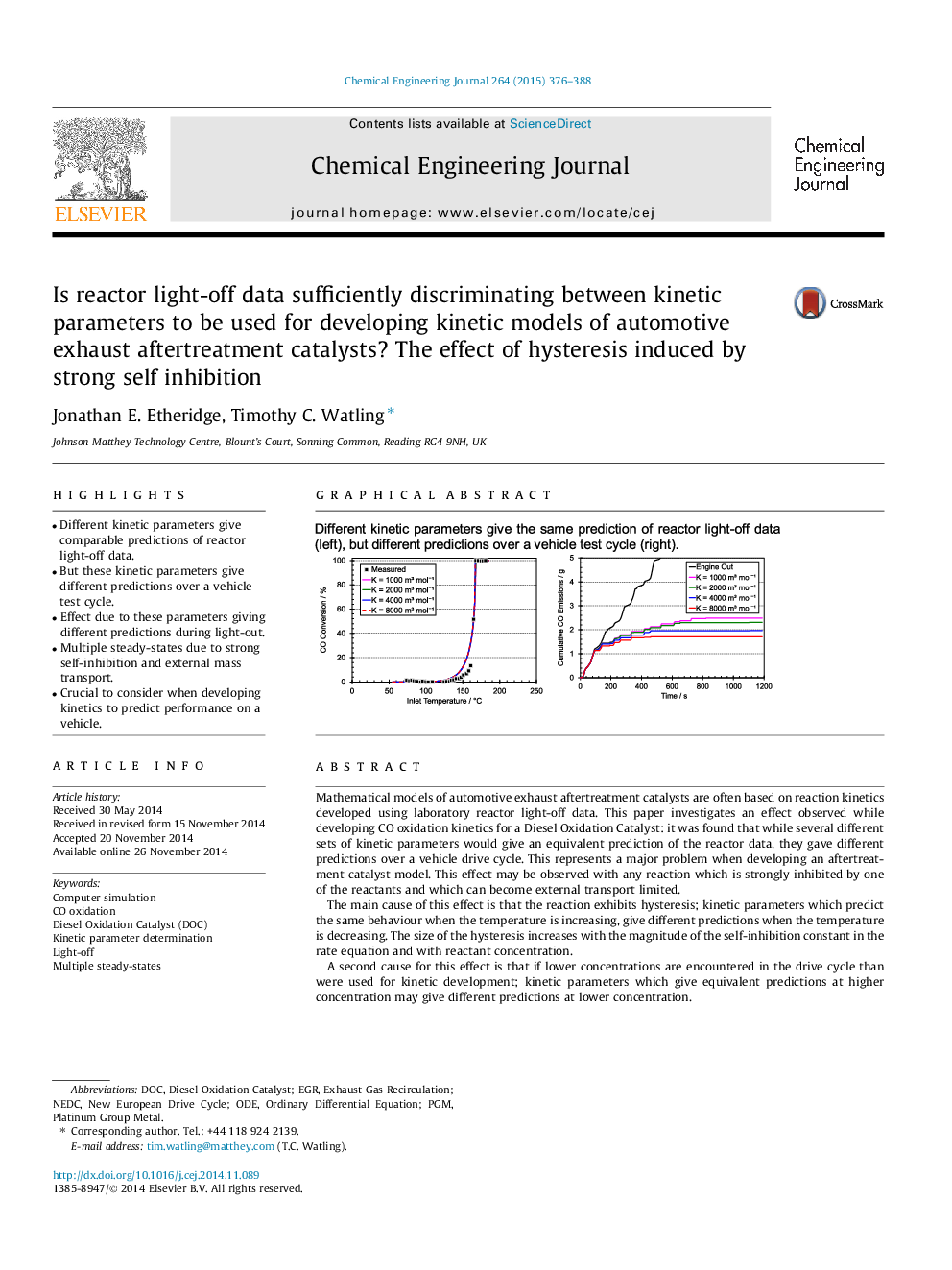| Article ID | Journal | Published Year | Pages | File Type |
|---|---|---|---|---|
| 146898 | Chemical Engineering Journal | 2015 | 13 Pages |
•Different kinetic parameters give comparable predictions of reactor light-off data.•But these kinetic parameters give different predictions over a vehicle test cycle.•Effect due to these parameters giving different predictions during light-out.•Multiple steady-states due to strong self-inhibition and external mass transport.•Crucial to consider when developing kinetics to predict performance on a vehicle.
Mathematical models of automotive exhaust aftertreatment catalysts are often based on reaction kinetics developed using laboratory reactor light-off data. This paper investigates an effect observed while developing CO oxidation kinetics for a Diesel Oxidation Catalyst: it was found that while several different sets of kinetic parameters would give an equivalent prediction of the reactor data, they gave different predictions over a vehicle drive cycle. This represents a major problem when developing an aftertreatment catalyst model. This effect may be observed with any reaction which is strongly inhibited by one of the reactants and which can become external transport limited.The main cause of this effect is that the reaction exhibits hysteresis; kinetic parameters which predict the same behaviour when the temperature is increasing, give different predictions when the temperature is decreasing. The size of the hysteresis increases with the magnitude of the self-inhibition constant in the rate equation and with reactant concentration.A second cause for this effect is that if lower concentrations are encountered in the drive cycle than were used for kinetic development; kinetic parameters which give equivalent predictions at higher concentration may give different predictions at lower concentration.To avoid this problem, reactor data during both temperature ramp up and ramp down should be used for developing kinetics. However, it should be noted that it has been found that (i) not all experiments exhibit hysteresis and (ii) that discretisation of the catalyst into an exceptionally large number of elements is required for accurate prediction during ramp down.
Graphical abstractFigure optionsDownload full-size imageDownload as PowerPoint slide
